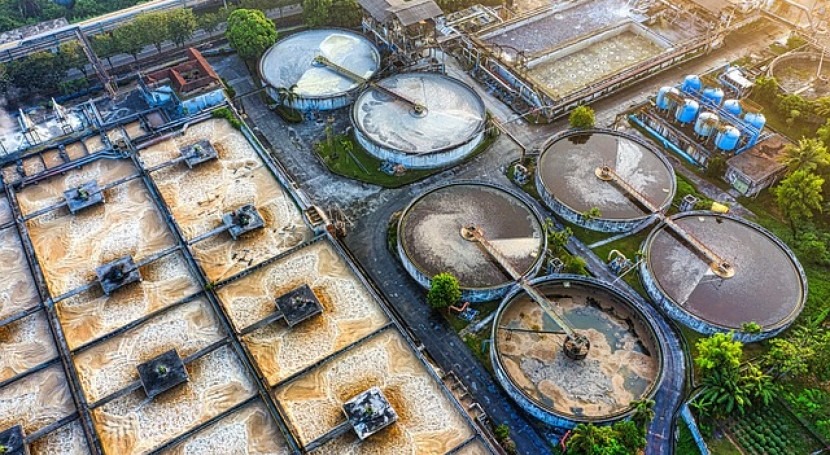Enhanced Waste Water Treatment Solutions for Sustainable Water Monitoring
Strategic Approaches to Boost Drainage Treatment Performance and Decrease Ecological Influence
In the realm of drainage treatment, the mission for boosted performance and lowered ecological influence is a continuous challenge that requires tactical solutions. As culture faces the imperative to handle water resources sustainably, a nuanced approach ends up being crucial. The combination of sophisticated therapy technologies, energy-efficient processes, resource recuperation techniques, improved nutrient removal techniques, and wise monitoring and control systems stands for a diverse structure for attending to these pressing problems. Nonetheless, what exists at the core of this complicated internet of approaches is the prospective to transform the method we come close to drainage therapy, not equally as a procedure of disposal, yet as an important chance for advancement and environmental stewardship.
Advanced Therapy Technologies
Innovative membrane layer filtering systems have transformed innovative wastewater treatment processes, significantly enhancing the elimination of contaminants. This innovation has shown to be extremely efficient in removing a large array of impurities, consisting of drugs, hefty steels, and natural compounds, which are commonly testing to eliminate with standard therapy techniques.
Moreover, membrane layer filtering systems provide various advantages over conventional treatment techniques. Furthermore, these systems are very functional and can be conveniently integrated right into existing therapy plants or made use of as standalone devices for decentralized applications.
Energy-Efficient Procedures
The assimilation of energy-efficient procedures in wastewater treatment systems is essential for enhancing resource application and reducing operational costs. By applying energy-efficient technologies, therapy plants can significantly reduce their carbon impact and total ecological effect. One crucial technique to enhancing power efficiency in wastewater treatment is the use of advanced oygenation systems, such as fine bubble diffusers or surface aerators, which can enhance oxygen transfer performance and decrease energy usage. In addition, incorporating power recuperation systems, like anaerobic food digestion for biogas production or making use of excess warmth for thermal procedures, can assist balance out power demands and advertise sustainability.
Additionally, maximizing process control and automation via making use of sophisticated sensors and keeping track of systems can boost overall power performance by changing operations in real-time based upon actual demand and conditions. Carrying out energy audits and on a regular basis checking energy performance indicators are vital practices to determine locations for enhancement and track energy-saving efforts successfully. Generally, the adoption of energy-efficient processes in wastewater therapy not just profits the atmosphere but also contributes to long-lasting expense financial savings and functional sustainability.
Source Recuperation Strategies
With a concentrate on optimizing resource application and sustainability in wastewater therapy systems, the implementation of resource healing approaches becomes a crucial element in improving functional efficiency. Resource recovery approaches in wastewater therapy include the identification and extraction of useful resources from the waste stream, therefore turning what was when taken into consideration hop over to here waste right into a useful asset. By carrying out source recuperation strategies such as nutrient removal and recuperation, energy generation from natural matter, and the production of multiple-use water, wastewater treatment plants can minimize environmental influence while making the most of efficiency.

Boosted Nutrient Elimination Methods
Applying sophisticated nutrient removal techniques is vital for maximizing the effectiveness of wastewater therapy systems. One of the crucial image source methods made use of for improved nutrient removal is the procedure of organic nutrient removal (BNR), which entails the removal of nitrogen and phosphorus through organic processes.

In enhancement to BNR, advanced treatment methods such as membrane bioreactors (MBRs) and constructed wetlands can likewise be employed to enhance nutrient removal performance. MBRs utilize membranes to achieve high-grade effluent requirements by efficiently eliminating nutrients and put on hold solids. Constructed marshes simulate natural marsh processes to eliminate nutrients through plant uptake, microbial activity, and sedimentation. By integrating these advanced nutrient elimination strategies into wastewater therapy systems, districts and markets can effectively minimize nutrient contamination and safeguard the setting.
Smart Surveillance and Control Solution
Using innovative innovation, the combination of smart monitoring and control systems revolutionizes the functional performance of wastewater therapy facilities. These systems integrate innovative sensing units and information analytics to constantly keep an eye on crucial criteria such as pH levels, turbidity, liquified oxygen, and circulation rates in real-time. By gathering and evaluating this information, drivers can gain beneficial understandings right into the efficiency of the therapy processes, enabling proactive changes to optimize treatment efficiency.
Smart tracking and control systems also support remote tracking capacities, permitting operators to gain access to real-time information and control features from off-site places. This remote availability boosts operational adaptability and responsiveness, making it possible for swift interventions in situation of system malfunctions or changes in influent quality. The predictive maintenance capabilities of these systems assist protect against equipment failings and lessen go now downtime, eventually improving the general reliability of wastewater therapy operations.
Conclusion
To conclude, strategic methods such as innovative therapy innovations, energy-efficient procedures, resource recuperation techniques, improved nutrient elimination methods, and wise tracking and control systems play an essential function in boosting wastewater therapy effectiveness and minimizing environmental effect. By implementing these strategies, wastewater therapy plants can enhance their general performance, lower power intake, recover beneficial sources, and guarantee conformity with environmental regulations. These strategies are essential for lasting and effective wastewater administration methods.

In final thought, critical techniques such as sophisticated treatment technologies, energy-efficient processes, source recuperation methods, enhanced nutrient removal methods, and clever surveillance and control systems play an important duty in enhancing wastewater therapy effectiveness and reducing environmental influence.